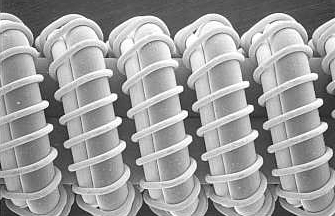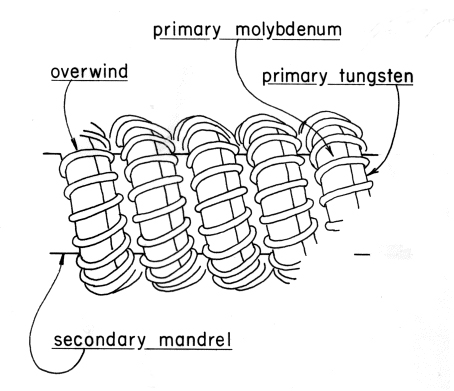|
|
|
This article was written by fellow lamp engineer and collector Edward J. Covington, and originally appeared on his own website of biographical sketches of persons involved in the lamp industry. Following his passing in February 2017, and with kind permission of his family, Ed's words have been preserved here in the hope of maintaining access to his writings for the benefit of subsequent generations.
|

Fluorescent lamp pioneers, from L to R:
A. Eugene Lemmers, John O. Aicher, Richard N. Thayer, George E. Inman
(Picture courtesy of Richard E. Lemmers) |
Biography
John Owens Aicher (Jan 18, 1912 - Dec 1, 1993), a native of Leadville, Colorado, attended E. Denver High school and graduated in June 1929. He then attended the University of Denver and in June 1933 was awarded a Bachelor of Science degree in Chemical Engineering. His minor subject was Mathematics.
Aicher started to work at Nela Park in February 1934. From the standpoint of timing it couldn't have been been more opportune. He was there to see the start of the fluorescent lamp work and, as it turned out, he spent his entire working career in that area. Aicher first worked on various design aspects of the lamp as well as manufacturing techniques. He also worked on emission mixes.
Aicher's patent, US 2,306,925, was for an ELECTRODE AND ITS FABRICATION. It made the SLIMLINE fluorescent lamp practical. The lamp manufacturers around the world have followed in the adoption of this "overwind" electrode. The importance of this electrode design cannot be over stated as it has impacted lamps of most designs since its development. The design resulted in a "basket" which held the emission mix close to the current carrying tungsten wire. A doubly coiled electrode is shown below with all wires in place before mandrel dissolving. The top photo shows an actual electrode with mandrels and the drawing below identifies the wires involved.
Aicher was co-developer of the POWER GROOVE fluorescent lamp. His experimental techniques and results were beyond reproach. His input into design and manufacturing problems was frequently sought.
John Aicher married Margaret Moreland and they had two children, Joan and Maggie. John was a member of the Cleveland Engineering Society, the Camera Guild of Cleveland, and was a volunteer photographer at the Cleveland Museum of Natural History.
|

Scanning Electron Microscope image of Aicher's Fluorescent Cathode
|

Patent Drawing of Aicher's Fluorescent Cathode |
Patents
- US 2,109,984 - Electric Discharge Device - 1938/03/01
- US 2,267,318 - Electrode and Terminal Structure for Electric Discharge Devices - 1941/12/23
- US 2,306,925 - Electrode and Its Fabrication - 1942/12/29
- US 2,353,635 - Cathode for Discharge Tubes - 1944/07/19
- US 2,368,410 - Current-Limiting Control for Electric Discharge Devices - 1945/01/30 - with John H. Campbell
- US 2,476,649 - Coated Lamp Envelope and Method of Protecting the Same - 1949/07/19
- US 2,950,410 - Multiple Groove Discharge Lamp - 1960/08/23 - with Eugene Lemmers
- US 2,973,447 - Grooved Lamp Vapor Pressure Control - 1961/02/28 - with Eugene Lemmers
References & Bibliography
- "Death Notice - John O. Aicher", The Plain Dealer, Dec 3 1993, p.14C.
- "Obituary - John O. Aicher, 81, was design engineer for GE", The Plain Dealer, Dec 4, 1993, p.7E.
|
|
|
|
|